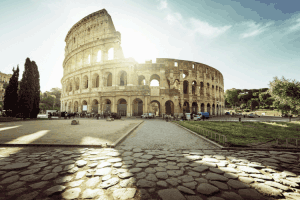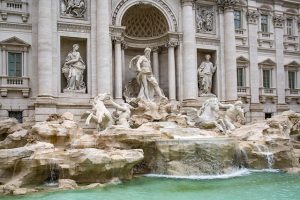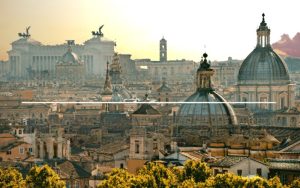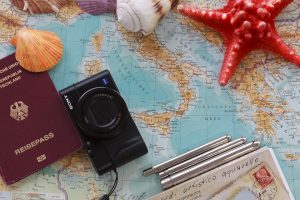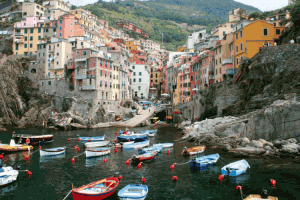Italy is one of the most diverse countries in the world to visit. Holidaying in this beautiful country is always a pleasure as it offers multiple things to enjoy. For nature lovers, history enthusiasts, foodies, adventurous spirits, and leisure-seekers, Italy is like a slice of heaven. But you must have a clear idea on when you should be visiting Italy.
While Italy is pleasant for a visit year-round, knowing what it offers each month can make a journey to this divine country unforgettable. Let’s take a look at the best month to travel to Italy, considering the weather, culture, events, and attractions.
Italy month-by-month Travel guide
January – Rome’s Winter Elegance
January and February are the coolest months in Rome. These two months receive intermittent rains. The air temperatures during the day are pleasant and bearable for stepping out for sightseeing and adventure. However, if you want to experience the nightlife in Italy, you must know that the temperatures drop to -5°C. With a cool and crisp climate, Rome turns into serene beauty, making January an ideal time to visit. Major attractions in Rome, such as the Colosseum and Vatican city, are less crowded. You have ample time and space to snap photos at the Trevi Fountain as there won’t be any tourists. What makes visiting Rome in January a must is the free entry to popular attractions. Moreover, January is a great time to indulge in Italian food and drinks.
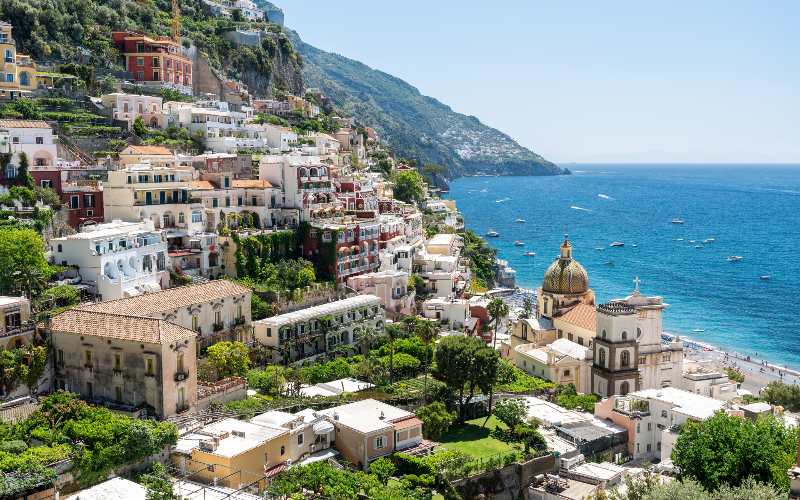
What’s special in January?
- Enjoy fewer crowds and lower prices
- Witness the stunning Piazza Navona Christmas Market (until early January)
- Enjoy some of the amazing things to do in winter in Italy, such as visiting Rome’s museums and galleries without the summer heat
- Indulge in delicious winter dishes like carbonara and cacio e pepe
Temperature in January: Average high of 12°C (54°F) and low of 3°C (37°F)
Tips to keep in mind:
- Pack warm clothes, including a coat, scarf, and gloves
- Be prepared for occasional rain showers
- Check opening hours of attractions, as some may have reduced winter hours
- Make reservations for popular restaurants to avoid disappointment
Events to attend in this month:
- New Year’s Day (January 1st)
- Epiphany (January 6th)
February – Venice’s Romantic Carnival
Venice, the city of canals, is one of the most romantic places in the world, where celebrating Valentine’s Day is an out-of-the-world experience. Taking a gondola ride and having a candle-lit dinner at a restaurant are the romantic things to do. Besides Valentine’s Day celebration, Venice also holds Carnival in February. The Venetian Carnival may be different than the Brazilian, but it is worth participating. Locals and tourists dressed up in their best colorful costumes and with masks parade on the historic streets. The Grand Canal becomes more beautiful during this time with decorated boats floating.
What’s special about February?
- Experience the magic of Venice Carnival, with its elaborate masks and costumes
- Enjoy a romantic gondola ride along the city’s canals
- Indulge in delicious Venetian cuisine, including seafood and risotto
- Take advantage of fewer crowds and lower prices compared to peak season
Temperature in February: Average high of 8°C (46°F) and low of 0°C (32°F)
Tips to keep in mind:
- Pack warm clothes, as temperatures can be chilly, especially at night
- Be prepared for occasional fog and acqua alta (high water) in Venice
- Book accommodations and flights well in advance for Carnival
- Explore the city’s lesser-known neighborhoods to escape the crowds
Events to attend in this month:
- Venice Carnival (dates vary, usually in February)
- Valentine’s Day (February 14th)
March – Blossoming Beauty in Florence
Florence experiences moderate temperatures in March, making it ideal for tourists to enjoy its art galleries and take up outdoor activities and adventures. As it is the beginning of spring, you will find a combination of warm, rainy, and cold temperatures for the entire month. It is March when the Boboli Gardens start blooming, which is a sight to behold. The Florence New Year is also celebrated in March, providing you with an insightful experience into its local culture. As the tourist footfall is low, you can enjoy art galleries and museums and find out why Florence is considered the birthplace of the Renaissance.
What’s special in March?
- Witness the beginning of spring as flowers start to bloom across the city
- Visit the Uffizi Gallery and Accademia without the summer crowds
- Enjoy mild temperatures perfect for exploring the city on foot
- Indulge in traditional Florentine dishes like ribollita and bistecca alla fiorentina
Temperature in March: Average high of 15°C (59°F) and low of 5°C (41°F)
Tips to keep in mind:
- Pack layers, as temperatures can vary throughout the day
- Book tickets for popular attractions in advance to avoid long lines
- Be prepared for occasional rain showers
- Take a day trip to the nearby Chianti region for wine tasting and stunning views
Events to attend in this month:
- Festa della Donna (International Women’s Day) on March 8th
- Florentine New Year (March 25th)
April – Tuscan Sunshine
With winter bidding adieu and spring setting in, April is the best time to visit Tuscany. In April, most of the hotels that were closed for the winter reopen. As the weather is pleasant, you can enjoy the many flower festivals held in the city. You can also enjoy the sights of the Cathedral of Florence from the streets or enjoy the beautiful views of the city from the dome of the Cathedral. If you are interested in admiring Gothic-style and Renaissance-style architecture, then visit the Piazza Grande. It is one of the most frequented public squares in the entire Tuscany. Another best way to enjoy Tuscany is to rent a car and drive along its coast and enjoy picturesque views.
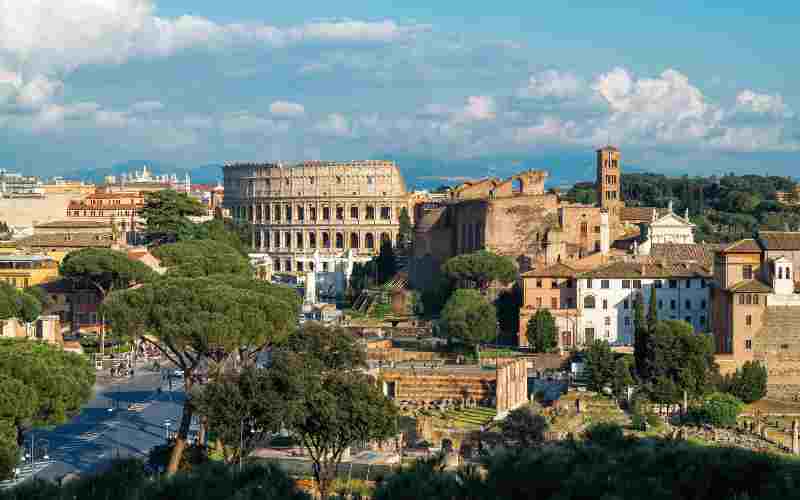
What’s special in April?
- Enjoy mild temperatures and plenty of sunshine
- Witness the stunning beauty of the Tuscan countryside as wildflowers bloom
- Visit the charming hill towns of San Gimignano and Montepulciano
- Indulge in delicious Tuscan wines like Chianti and Brunello di Montalcino
Temperature in April: Average high of 19°C (66°F) and low of 8°C (46°F)
Tips to keep in mind:
- Pack comfortable shoes for exploring the hill towns and countryside
- Be prepared for occasional rain showers
- Book accommodations and car rentals well in advance, as April is a popular time to visit
- Take a cooking class to learn how to make traditional Tuscan dishes
Events to attend in this month:
- Easter (dates vary, usually in April)
- Scoppio del Carro (Explosion of the Cart) in Florence on Easter Sunday
May – Amalfi Coast Bliss
May is the best time to visit the Amalfi Coast as the temperatures are mild and warm, making it perfect for outdoor activities and sightseeing. As it is still off-season, you can laze around and enjoy the lush and colorful landscapes without any disturbance. Expect rain showers that last for a few hours and cool temperatures during the night. It is sunny, and the crowd numbers are still reasonable. Walk the cliff-side villages and enjoy as you indulge in mouthwatering seafood while gazing at the ravishing Mediterranean. Boat races and Ancient Maritime Republics are a few important events you can enjoy in May on the Amalfi Coast.
What’s special in May?
- Enjoy warm temperatures and plenty of sunshine
- Witness the stunning beauty of the Amalfi Coast as flowers bloom and the sea sparkles
- Visit charming coastal towns like Positano and Ravello
- Indulge in delicious seafood dishes and limoncello, the region’s famous lemon liqueur
Temperature in May: Average high of 24°C (75°F) and low of 14°C (57°F)
Tips to keep in mind:
- Pack sunscreen, a hat, and comfortable shoes for exploring the coast
- Be prepared for crowds, as May is a popular time to visit the Amalfi Coast
- Book accommodations and transportation well in advance
- Take a boat tour to see the coast from a different perspective
Events to attend in this month:
- Festa della Sensa (Feast of the Ascension) in Venice (dates vary, usually in May)
- Giro d’Italia (cycling race) throughout Italy (dates vary, usually in May)
June – Festive Vibes in Sicily
June brings Sicily alive with raucous festivities and activities. The beaches are welcoming, and the climate is conducive to walking around olden period sites such as the Valley of Temples. Do not wait until the high season in June to plan your visit, as summer is already here. The days are warm, and evenings are slightly colder, making it a good time to hit the beach for swimming and water sports such as kayaking, windsurfing, snorkeling, and scuba diving. Porto Palo and Menfi, Sampieri beaches are good options for sunbathing and relaxing. Important events in Sicily in June are Republic Day when grand celebrations, parades, and fireworks take place in the city, Taormina Film Fest, and Taormina Arte (International Festival of the Arts).
What’s special in June?
- Enjoy warm temperatures and plenty of sunshine
- Witness the stunning beauty of Sicily’s beaches and ancient ruins
- Visit charming towns like Taormina and Syracuse
- Indulge in delicious Sicilian dishes like arancini and cannoli
Temperature in June: Average high of 28°C (82°F) and low of 18°C (64°F)
Tips to keep in mind:
- Pack sunscreen, a hat, and lightweight clothing
- Be prepared for crowds, as June is a popular time to visit Sicily
- Book accommodations and transportation well in advance
- Take a day trip to Mount Etna, Europe’s largest active volcano
Events to attend in this month:
- Festa di Sant’Agata (Feast of Saint Agatha) in Catania (dates vary, usually in June)
- Taormina Film Fest in Taormina (dates vary, usually in June)
July – Month of Summer Splendor in the Lakes Region
July in Italy is when summer is at the next stage. The days are warm and sunny, making the main season in the Lakes Region, which includes Lake Como and Garda Lake. The warm climate encourages visitors to engage in water sports and take leisurely strolls along lakeshores. Enjoy the picturesque view of northern Italy during this idyllic month. July is the best time to soak in sunbathing, go swimming, boating, and have outdoor picnics with family and friends.
What’s special in July?
- Enjoy warm temperatures and plenty of sunshine
- Witness the stunning beauty of the Italian Lakes, including Lake Como and Lake Garda
- Visit charming lakeside towns like Bellagio and Sirmione
- Indulge in delicious regional dishes like risotto alla milanese and osso buco
Temperature in July: Average high of 29°C (84°F) and low of 18°C (64°F)
Tips to keep in mind:
- Pack sunscreen, a hat, and lightweight clothing
- Be prepared for crowds, as July is peak tourist season in the Lakes Region
- Book accommodations and transportation well in advance
- Take a boat tour to see the lakes from a different perspective
Events to attend in this month:
- Verona Opera Festival in Verona (dates vary, usually in July)
- Festa del Redentore (Feast of the Redeemer) in Venice (third Sunday in July)
August – Coastal Retreat in Piedmont & Liguria
August is hot in Italy. It also marks the end of summer and the beginning of autumn. The best thing to do to stay away from the heat is to go to a seaside resort and mountains. Two of the best options where you can enjoy coastal retreats are Piedmont and Liguria. Piedmont offers inviting mountain valleys. A hike in the mountain valleys will reward you with breathtaking views. Liguria is home to several seaside towns. It is perfect to relax and enjoy picture-postcard views.
What’s special in August?
- Enjoy warm temperatures and plenty of sunshine
- Witness the stunning beauty of the Ligurian coast and Piedmont’s rolling hills
- Visit charming coastal towns like Portofino and Cinque Terre
- Indulge in delicious regional dishes like pesto alla genovese and vitello tonnato
Temperature in August: Average high of 29°C (84°F) and low of 18°C (64°F)
Tips to keep in mind:
- Pack sunscreen, a hat, and lightweight clothing
- Be prepared for crowds, as August is peak tourist season in Italy
- Book accommodations and transportation well in advance
- Take a wine tasting tour in the Piedmont region, famous for its Barolo and Barbaresco wines
Events to attend in this month:
- Palio di Siena horse race in Siena (August 16th)
- Ferragosto (Assumption Day) on August 15th, celebrated throughout Italy
September – Harvest Season in Umbria
September is a favorable time to visit Umbria as the harvest season commences. This region is also known as Italy’s ‘green heart, where one can enjoy pleasurable weather and participate in grape and olive harvest festivities. Wines produced in Umbria are exported to different parts of the world. The weather in September is warm despite the end of summer, but you can expect sunny days. Enjoy a classical music festival in September. Visit the state-owned museums and archaeological sites for free on the first Sunday of the month.
What’s special in September?
- Enjoy mild temperatures and fewer crowds as summer comes to an end
- Witness the stunning beauty of Umbria’s rolling hills and medieval towns
- Visit charming towns like Assisi and Orvieto
- Indulge in delicious regional dishes like truffles and porchetta
Temperature in September: Average high of 25°C (77°F) and low of 14°C (57°F)
Tips to keep in mind:
- Pack layers, as temperatures can vary throughout the day
- Book accommodations and transportation in advance, as September is still a popular time to visit
- Take a truffle hunting tour to experience the region’s famous delicacy
- Visit local wineries to taste the region’s famous Sagrantino di Montefalco wine
Events to attend in this month:
- Festa della Vendemmia (Grape Harvest Festival) in various locations throughout Italy
- Palio di Asti horse race in Asti, Piedmont (third Sunday in September)
October – Autumn Splendors in Piedmont
October in Italy is autumn, which makes Italy suitable for sightseeing. The mild temperatures and the golden hue of foliage make the atmosphere soothing for locals and tourists. One of the must-visit places in Italy during October is Piedmont. With its hills covered in vineyards, it is beautiful to see in October. Autumn colors are breathtaking, and the temperatures are perfect for wine tasting. Learn about the food culture of this region during your visit.
What’s special in October?
- Enjoy mild temperatures and stunning fall foliage
- Witness the beauty of Piedmont’s rolling hills and vineyards
- Visit charming towns like Alba and Asti
- Indulge in delicious regional dishes like tajarin and agnolotti del plin
Temperature in October: Average high of 18°C (64°F) and low of 9°C (48°F)
Tips to keep in mind:
- Pack layers, as temperatures can vary throughout the day
- Book accommodations and transportation in advance, as October is a popular time to visit for truffle season
- Take a truffle hunting tour to experience the region’s famous white truffles
- Visit local wineries to taste the region’s famous Barolo and Barbaresco wines
Events to attend in this month:
- Fiera Internazionale del Tartufo Bianco d’Alba (Alba White Truffle Festival) in Alba, Piedmont (dates vary, usually in October)
- Halloween (October 31st), celebrated in some Italian cities like Rome and Milan
November – Cultural Exploration in Naples
November is excellent to visit Naples in November as the temperature is slightly cool and the breeze gentle. There are lots of events in Naples during the month of October. One of the must events is the Fiera di Santa Caterina observed to pay respect to Saint Catherine. Another attraction is the Feast of San Martino held in the honour of St. Martin. Participate in these events and savor traditional Italian food, shop crafts, and entertain yourself with live shows. This month is also good to visit the Royal Palace of Caserta. This 18th-century palace has huge rooms, lush gardens, fountains, and statues. November also makes hiking in the Vesuvius National Park a pleasure.

What’s special in November?
- Enjoy mild temperatures and fewer crowds
- Witness the stunning beauty of Naples’ historic center and nearby archaeological sites like Pompeii and Herculaneum. Amidst the list of things to do in Pompeii, do visit the sanctuaries and thermal baths.
- Visit world-class museums like the National Archaeological Museum and Capodimonte Museum
- Indulge in delicious Neapolitan dishes like pizza and sfogliatelle
Temperature in November: Average high of 17°C (63°F) and low of 9°C (48°F)
Tips to keep in mind:
- Pack layers, as temperatures can vary throughout the day
- Be prepared for occasional rain showers
- Book accommodations and transportation in advance, as November is still a popular time to visit for cultural tourism
- Take a day trip to the nearby islands of Capri and Ischia for stunning views and relaxation
Events to attend in this month:
- Festa di San Martino (Feast of Saint Martin) on November 11th, celebrated throughout Italy
- Napoli Teatro Festival (Naples Theater Festival) in Naples (dates vary, usually in November)
December – Winter Magic in Milan
December in Italy is the coolest. Since it’s Christmas time, the streets are decorated with bright lights adding to the natural warmth. The best city in Italy to celebrate Christmas is Milan that has the largest church in Italy. The cathedral is in Gothic architectural style and has over 6000 statues. The entire city of Milan is decorated with beautiful lights and the renowned La Scala Opera House puts on mesmerizing shows. See the winter beauty of Italy and go window-shopping on top notch streets.
What’s special in December?
- Enjoy the festive atmosphere of the holiday season
- Witness the stunning beauty of Milan’s Christmas lights and decorations
- Visit world-class museums like the Pinacoteca di Brera and Museo del Novecento
- Indulge in delicious Milanese dishes like risotto alla milanese and cotoletta alla milanese
Temperature in December: Average high of 7°C (45°F) and low of 0°C (32°F)
Tips to keep in mind:
- Pack warm clothes, including a coat, scarf, and gloves
- Be prepared for occasional rain and snow showers
- Book accommodations and transportation well in advance for the holiday season
- Take a day trip to the nearby Lake Como for stunning winter views and charming Christmas markets
Events to attend in this month:
- Festa di Sant’Ambrogio (Feast of Saint Ambrose) on December 7th, celebrated in Milan
- Christmas markets throughout Italy, including the famous Oh Bej! Oh Bej! market in Milan (dates vary, usually in December)
What is the best season to go diving in Italy?
The best season for diving in Italy is from May to October, when the water temperatures are warm and comfortable, ranging from 18°C (64°F) to 25°C (77°F). The visibility is also excellent during this period, often reaching up to 30 meters (100 feet) or more.
The summer months of July and August offer the warmest water temperatures, but they also attract the most crowds. If you prefer a more tranquil diving experience, consider planning your trip in May, June, September, or October. During these months, you can still enjoy pleasant water temperatures and good visibility while avoiding the peak tourist season.
Some of the best diving locations in Italy include the Amalfi Coast, the island of Elba, the Aeolian Islands, and the Tremiti Islands. Each of these destinations offers unique underwater landscapes, vibrant marine life, and fascinating historical shipwrecks, making Italy a top choice for divers of all levels.
Finally, Italy is open throughout the year and has a variety of experiences to engage in. All the months are good to enjoy cultural heritage, stunning coastline, ancient architectures, and lots more. Plan your trip as per the weather you prefer considering the cultural activities and outdoor activities following this month-to-month Italy travel guide. To visit Italy during any of these months, apply for an Italian tourist visa at https://www.italyvisa.ae/.
FAQs: Best Time to Visit Italy
What is the best time to visit Italy for a beach vacation?
What is the best time to visit Italy for skiing?
What is the best time to visit Italy for wine tasting?
-
- Piedmont (Barolo, Barbaresco): mid-September to mid-October
- Tuscany (Chianti, Brunello di Montalcino): mid-September to early October
- Veneto (Amarone, Prosecco): mid-September to early October
- Sicily (Nero d'Avola, Etna Rosso): late August to mid-September
What is the best time to visit Italy for a city break?
What is the best time to visit Italy for a cultural experience?
-
- Venice Carnival: February
- Palio di Siena (horse race): July 2 and August 16
- Opera season at the Arena di Verona: June to August
- Ravenna Festival (music and dance): June to July
- Umbria Jazz Festival: July
- Festa della Madonna Bruna (religious festival in Matera): July 2
- Festa di San Gennaro (religious festival in Naples): September 19
What is the best time to visit Italy for photography?
-
- Spring (April to May): This is an excellent time for landscape photography, as the countryside is lush and green, and wildflowers are in bloom. The light is also softer and more diffused compared to the summer months.
- Summer (June to August): This is the best time for beach and coastal photography, as the weather is warm and sunny, and the colors are vibrant. However, the harsh midday light can be challenging to work with, so aim to shoot early in the morning or late in the afternoon.
- Autumn (September to November): This is a great time for landscape and cityscape photography, as the light is warm and golden, and the autumn colors add a beautiful touch to the scenery. The wine harvest season also offers unique photo opportunities.
- Winter (December to March): This is the best time for snowy landscape photography, particularly in the mountains and ski resorts. Cities also offer interesting photo opportunities during the winter months, with Christmas lights and festive decorations.
